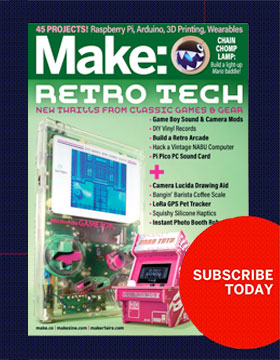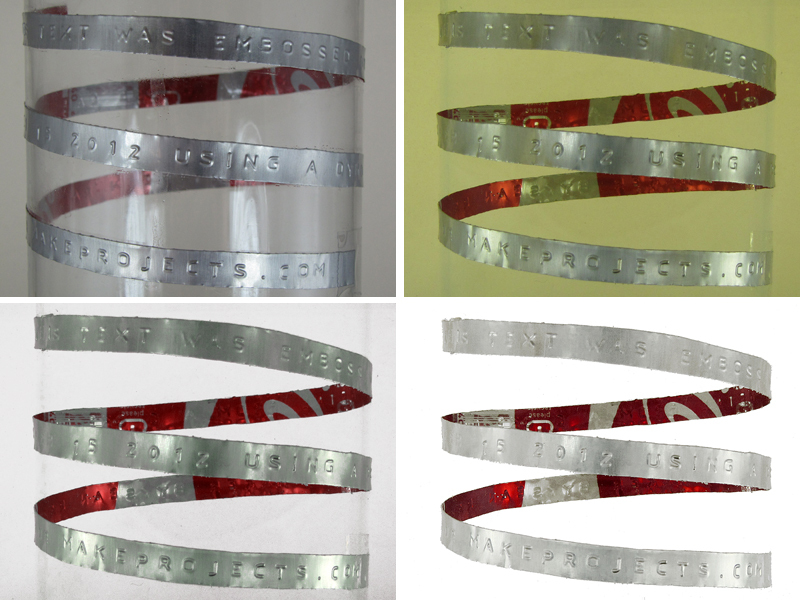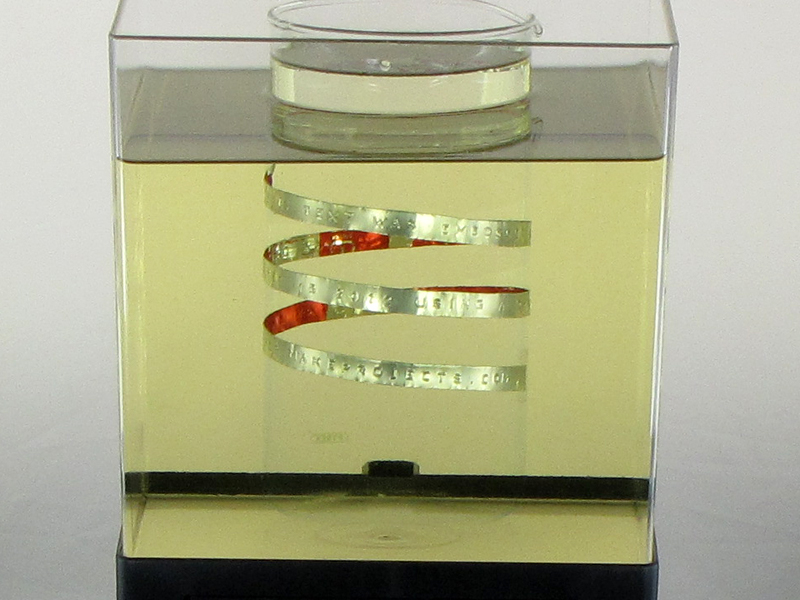Recently, I needed a special photograph for my Soda Can Label Embossing project. I wanted to show a long embossed label arranged in a spiral, so that both the front and the back of the label were visible, in order to show off both the clear embossed text on the front, and the soda can graphics on the back. And I wanted a wide, short, even spiral that would fit nicely in a 4:3 aspect ratio.
The natural curliness of the aluminum, however, made it very hard to get the spiral I wanted without wrapping the label around some kind of round support. But then the support, even if transparent, made it hard to see the backside of the label clearly. If I had to use a support form, I wanted it to be truly invisible, as if the label were floating freely in space.
There is a classic physics demonstration, sometimes disguised as a bit of stage magic, in which pieces of glass are made to disappear by immersion in a liquid that has the same refractive index as the glass itself. I had a Pyrex glass beaker of about the diameter of the spiral I wanted, and I decided to experiment with the oil method for making the beaker invisible to get the shot. It’s a bit messy, and there are some things I’ll do differently next time, but it works.






















